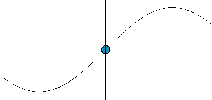While my kids were growing up, I tried to introduce them to science by doing little experiments at home. This was particularly helpful during the school holidays.
My daughter wasn't a huge fan of the science experiments, but she loved it when we played around with measuring the speed of light using our microwave.
The Experiment
For this experiment, you'll need the following:
- Microwave
- Bowl and plate
- Calculator
- Measuring tape or ruler
And the most important item of all:
CHOCOLATE
(Oh, yum, yum, yum! I love it when science gets tasty.)
Step 1
Disable the turntable within your microwave by removing the turntable plate, then place a microwaveable bowl upside down over the mechanism. Place a microwaveable plate on top of the upside down bowl.

Step 2
Place a bar of chocolate that measures approximately 8 cm by 8 cm onto the plate in the center of the microwave. Microwave on high for approximately 30 seconds. (Times may vary depending on the wattage of the microwave.)

Step 3
Measure the distance between two neighboring melted sections. Be advised that it can be difficult to find the melted sections. You may have to perform this experiment repeatedly just to get a good measure. (Yum, yum! More chocolate.)

Step 4
Convert your measurement into meters and multiply by 2, then multiply by the frequency of your microwave in Hertz. You can find the frequency of your microwave on the back. Most domestic microwaves use a frequency of 2450 MHz (2,450,000,000 Hz).

If you have performed your calculations correctly, then you should have an answer that is approximately 300,000,000 m/s.

The Science
When people think of light, they tend to think of what we can see, but visible light is only a small narrow band in the electromagnetic spectrum. The full spectrum includes infrared, ultraviolet, X-rays, gamma rays, microwaves, and radio waves.

Almost everything on our planet will emit light in some form. We humans emit infrared light in the form of a heat source. (BTW, this is the principle behind night vision technology.)
When discussing light, physicists have a variety of models at their disposal, one of which is that light is a wave. In the case of microwaves, that is exactly what we're dealing with, hence, the term "microwave".


Waves can be described as traveling waves, rippling along. One example is when you throw a pebble into a still pool of water. The waves travel outward from the origin along the surface of the water.
Waves can also be described as standing waves. These waves are where the end points (and sometimes points in the middle) are fixed, known as nodes, and everything else is moving about, known as anti-nodal regions.

The waves a microwave generates are standing waves with heating of the food occurring in the anti-nodal regions. A turntable is used to ensure that the anti-nodes can heat the food evenly.
In this experiment, you are measuring the distance between two consecutive anti-nodes. This measurement will give you half the wavelength (λ). If you multiply λ by the frequency of the wave (f), then you have the speed of the wave.
Light, all forms of light, travels at a constant speed (c) through air or a vacuum. This is accepted to be 3 x 108 m/s (or 300,000,000 m/s). Given the relationship of:
c = λf,
then for a frequency of 2450 MHz (or 2,450,000,000 Hz), you can expect a wavelength of approximately 0.12 m (12 cm). Half of that is 6 cm, which is what we measured in our experiment.
How close did you get with your measurements?
For more information about the microwave speed of light experiment and to see it in action, check out the special video shared below.
Copyright © 2017 Judy L Mohr. All rights reserved.
Updated Copyright © 2025 Judy L Mohr. All rights reserved.
This article first appeared on judylmohr.com
Share this:
- Click to share on Facebook (Opens in new window) Facebook
- Click to share on Threads (Opens in new window) Threads
- Click to share on Bluesky (Opens in new window) Bluesky
- Click to share on Pinterest (Opens in new window) Pinterest
- Click to share on LinkedIn (Opens in new window) LinkedIn
- Click to email a link to a friend (Opens in new window) Email

